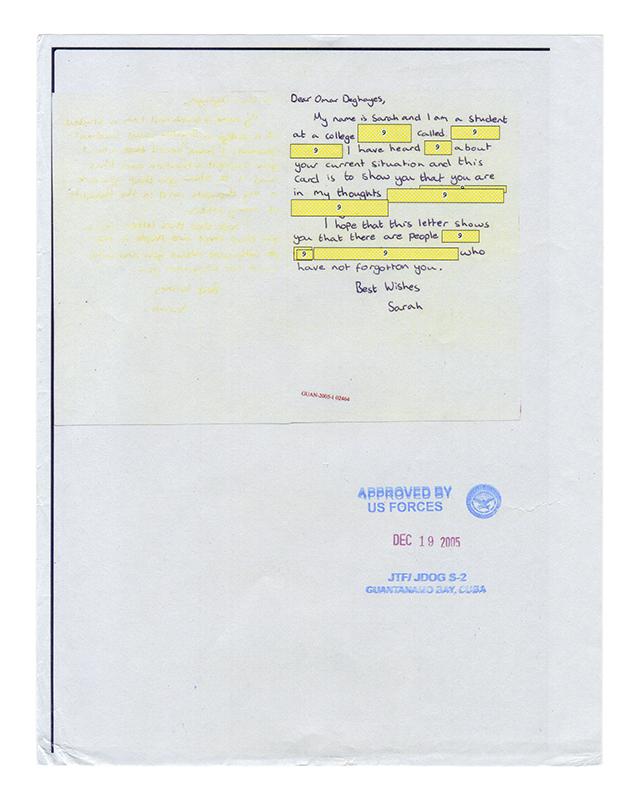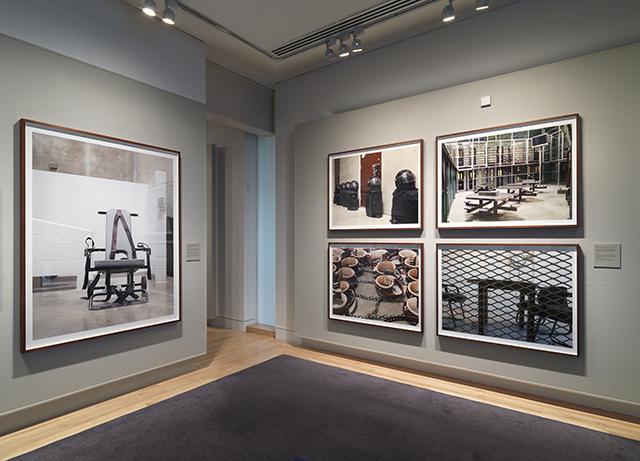Within everyday social life, those who fall outside normative boundaries are subject to social censure through rejection, exclusion, vitriol, and violence. One group — white, male, cis, able-bodied, neurotypical, thin — is assumed to be normal and can operate in a way that feels relatively effortless while the rest have to adapt and account for their difference. The non-normative may then be marginalized or erased to preserve the illusion of those norms’ universality.
This false universality, and the indifference it can breed, is the crux of privilege: The privileged group needn’t worry themselves with the nuts and bolts of social navigation, because the system has evolved to accommodate them. That is, they have used their sociopolitical dominance to replicate their advantage as part of the natural order. Privilege can be explicit (e.g., “Whites Only!”), but more often, it blends in with the mundanity of social organization (e.g., sidewalks without wheelchair-accessible curb cuts).
One of the dominant lines in tech critique today — that phones and social media diminish face-to-face interaction and thus erode “real” human connection — trades in privileged and normative logic. The critique of screens as alienating is less about screens than about what constitutes the essence of human nature, and who counts as fully human with respect to that fixed, homogenous, and highly particularized version of humanity. To assess the validity and ramifications of this critique, it’s important to have a clear picture of the universal human with which critics begin — and an account of all those whom the model tacitly discounts.
It is not difficult to find examples of prominent academics making the case that screens proliferate to humanity’s detriment, stunting our ability to connect and participate in “real” sociality. In 2014, clinical psychologist Sue Johnson argued in Wired that “real connection with others is being crowded out by virtual kinship.” Sherry Turkle claimed in 2015 that “you need to suppress your empathy ‘gene’ in order to participate fully in the mobile revolution.” And in 2016, sociologist Zygmunt Bauman argued in El País that “it’s so easy to add or remove friends on the internet that people fail to learn the real social skills, which you need when you go to the street, when you go to your workplace, where you find lots of people who you need to enter into sensible interaction with.”
The privileged needn’t worry about the nuts and bolts of “real” social navigation, because the system has evolved to accommodate them
Never mind that a dip into the research reveals these critics’ claims to be empirically unfounded — kinship is maintained (not “crowded out”) by digital connectivity, digital media are tools that effectively strengthen (not “suppress”) empathy, and today’s “workplace” is more accurately defined by project affiliation than shared office space. And of course, never mind that screen-mediated and face-to-face communication are not zero-sum — data show that digitally mediated communication augments rather than replaces face-to-face interaction.
These critics are instead driven by an ideological presupposition about screens separating people both from each other and from an essential part of themselves. As genuine as this concern may be, it is nonetheless predicated on a belief that our essence is the same and that screens affect us in basically the same way, no matter who we are. They assume a universal human nature, embodied by a normative technology user — one for whom face-to-face interaction is both possible and optimal, and whose local networks are consistently supportive and healthy. That is, the tech critics’ model human has full mental and physical health, a typical neurological profile, is “able” bodied, and self-identifies in socially supported ways. This model certainly does not describe all people, nor does it describe any person at all times. When critics lament the rise of screens and the supposed downfall of social connection, what they ignore is human diversity.
While it is true that communication media shape how people engage with one another and with the social world, a medium is not valuable or detrimental in its own right but more or less helpful and appropriate depending on circumstances. These tech critics begin with the concern that humanity suffers from the loss of an ideal communicative form — face-to-face interaction — and fail to ask the sociological question: Ideal for whom, and under what conditions? By doing so, the dominant tech critique overlooks entirely those people for whom face-to-face communication creates obstacles to interaction and for whom digital media is socially beneficial.
In a study of adults with early-onset Alzheimer’s, sociologist Jason Rodriquez showed how an online forum was instrumental in helping participants maintain social connection and preserve a sense of self. Participants lauded the benefits of a community, but they also found reprieve in the cadence of interaction afforded by the platform. Rodriquez’s participants reported that asynchronous communication made social engagement more accessible by circumventing the speed of face-to-face interaction. “I’m having a little trouble having normal conversations, but with typing I have all day to collect and express my thoughts,” one participant explained.
Alzheimer’s patients are far from alone in finding screen-mediated communication empowering where face-to-face was prohibitive. People with physical disabilities, people with neuro-atypicalities, people who are ill, and people with contested identities all may invigorate their social lives through digital media. And as Zeynep Tufekci pointed out in the Atlantic in 2012, “people who don’t dominate conversations…who appear shy, are less outgoing, who feel nervous talking to new people” and those who “are different from the people around them” may also benefit. Thus, in its striking specificity, the tech critics’ model is not only exclusionary, but also ableist, normative, and morally saturated.
Kinship is maintained, not crowded out, by digital connectivity, and today’s workplace is better defined by project affiliation than shared office space
Human bodies are far from uniform. Sight, sound, and mobility vary widely across populations, and across the course of any individual’s life. For many, physiology makes face-to-face interaction inaccessible or less accessible than digitally mediated forms of communication. For a person who is hearing impaired, communicating through text- and image-based platforms removes a significant barrier. For a person with nonstandard body control, screen mediation makes conversations and communities available. For those with vision impairments, gestural cues are not more authentic but superfluous, serving no communicative function. The normative model that insists on face-to-face engagement thus erases the disabled body.
So too, the normative tech critique discounts the atypical mind. A person with indicators of ADHD may find it intolerable to engage in one-on-one conversation with continuous eye contact. A person with traumatic brain injury may struggle to focus on multiple stimuli simultaneously, as in a crowded coffee shop or buzzing restaurant. A person on the autism spectrum may be better able to engage on a text-based platform in which word choice takes primacy over facial expressions.
In order to take face-to-face communication as more real, one must take for granted ableist assumptions of physically able bodies and neurotypical minds, of those who walk briskly, see, hear, and speak clearly, effectively read facial cues, and engage in ways that put most others at ease. If someone wheels, crutches, signs, stutters, interprets speech in literal terms, thrives in repetition and patterns, concentrates too long, shifts attention too quickly, feels uncomfortable with physical touch, or relies on touch to navigate the physical landscape, venturing into social interaction can pose exceptional challenges — not because of physical or cognitive deficiency but because infrastructures have been narrowly designed for a particular kind of person.
A variety of communicative forms can expand the definition of conversation and welcome a neurodiverse population — historically excluded from aspects of social life — into the web of social engagement. Yet normative bias in tech criticism not only ignores this opportunity but actively reinforces the devalued meanings associated with medical labels of cognitive difference. They claim that the internet makes us “autistic,” “schizophrenic,” and “ADHD” — labels deployed as signifiers of deficit, of something gone awry. We are thus purportedly suffering from technologically induced neuropathologies, curable only by unplugging and connecting with ourselves and each other in the “real” world. In contrast, screens can be the very way that we, as a society, stop pathologizing difference and instead broaden how and with whom we communicate. Screens offer a chance to question the value of “typical” thinking and, in turn, discover the richness of the human mind in all its varied forms.
It is notable that tech critics are not wary of those adaptive technologies that help people with disabilities more seamlessly negotiate the built environments and social arrangements constructed specifically for people with “able” bodies and typical ways of thinking and learning. Because of their ableist assumptions, tech critics do not apply their critique to adaptive technologies that help people speak, walk, see, and hear. They make no comment on the cochlear implant that transmits sound to deaf ears; they are uncritical of text-and-image-to-speech software that turns visual signals into auditory ones for people who are blind; they leave unaddressed the computer programs designed to teach people with autism how to accurately interpret facial cues. Indeed, these are all technologies that help people who are “different” adapt to circumstances for which they are ill equipped. These technologies treat disability as a problem to be cured rather than diversity to be acknowledged and accommodated. The burden of adaptation and inclusion is borne by those with disabilities — who are tasked with finding, paying for, and using the technologies in ways that are unobtrusive — rather than carried by society as a whole. Such adaptive technologies not only serve disabled populations but also serve the status quo. Their application does not threaten existing models of human nature nor insist upon social and structural adjustments for the sake of inclusivity. Instead, they allow stigma and exclusion to remain intact, as those who are stigmatized and excluded retrofit their bodies and train their minds for optimal function in an unaccommodating social system.
The ableism embedded in the normative tech critique is clear and reflects patterns of exclusion that pervade public social life. Yet those whose bodies and minds fall under the category of “disabled” are not the only ones forgotten by the critics. Rather, through the ebbs and flows of health, illness, and the inevitabilities of aging, the tech critics’ normative model inevitably excludes us all.
Screens offer a chance to question the value of “typical” thinking and, in turn, discover the richness of the human mind in all its varied forms
It is obvious how those with serious conditions that warrant prolonged hospitalization would benefit from phones and ubiquitous connectivity: Digital media not only provide access to an outside world but also can provide community through which those managing ill health can commiserate, gather information, exchange resources, get well, and find comfort in a shared condition. But even something as ordinary as the common cold reveals the limits of face-to-face communication. Not only does the person with clogged sinuses and a congested chest not want to be around people; others don’t wish to be in their presence. Screen mediation becomes a sick person’s access to social engagement, a means of human connection from beneath the blankets and tissues of isolated misery.
So too, digital media can give respite from the isolation of a contested identity. Screen mediation can be an equally important or even life-saving tool for those who feel (or know) that they cannot openly express their sexual preference, gender identity, religious beliefs, or political propensities because of unaccepting local social networks. For those with contested identities, screens provide a means of commiseration, collaboration, and eventually, collective action, with the potential for social change.
Increasingly, people are “coming out” via Facebook, announcing their sexual identity in a way they may give them more control. The affordances of large and overlapping networks, coupled with the time to craft a thoughtful message, facilitate what Nathan Jurgenson and I call “context collusion”: using social network sites to reach a vast audience and efficiently present the self in one’s own terms. Teens like Ryan Eichenauer, who went viral after posting a video status update declaring his romantic interest in men, deploy the screen to connect with family and friends in a truthful way while laying claim to identities for themselves.
Bauman complains that people use social media to “cut cultural comfort zones,” creating networks that reflect them back to themselves, instead of exposing the self to the full breadth of humanity. Rather than enter into debate and discomfort, he argues, people construct community with those who will not challenge their sense of self, and society is weaker for this. But broad exposure is a luxury enjoyed by those who identify in socially approved ways. For the rest, those for whom normal daily life is uncomfortable or dangerous, a cultural comfort zone may be an urgent need, not a narcissistic or egocentric proclivity.
To accept the argument that screens threaten our very humanness requires that one accepts the premise of an intractable human nature, one built upon a framework of normativity and privilege. Like all claims to human nature, tech critics misunderstand the dynamic human condition, and instead operate with a static picture of what is “good” and “right” for social and personal life. Such a model is at best misguided, and in practice, deeply exclusionary. In fact, no one will be able to satisfy the full range of norms implicit in the “screens prevent real conversation” critique throughout the entire span of their life. If only those who can always talk face-to-face are qualified to have real conversations, they may find there’s no one left to talk to.

 Control Order House Installation View, Edmund Clark. All images courtesy of the artist and the Imperial War Museum of London
Control Order House Installation View, Edmund Clark. All images courtesy of the artist and the Imperial War Museum of London Redacted image of a complex of buildings where a pilot identified as having flown rendition flights lives; from the series Negative Publicity, Edumnd Clark & Crofton Black
Redacted image of a complex of buildings where a pilot identified as having flown rendition flights lives; from the series Negative Publicity, Edumnd Clark & Crofton Black Home; from the series Guantanamo: If the Light Goes Out, Edmund Clark
Home; from the series Guantanamo: If the Light Goes Out, Edmund Clark Letter from Sarah, a college student; from the series Letters to Omar, Edmund Clark
Letter from Sarah, a college student; from the series Letters to Omar, Edmund Clark Bedroom; from the series Control Order House, Edumnd Clark
Bedroom; from the series Control Order House, Edumnd Clark Edmund Clark: War of Terror Installation View, Edmund Clark
Edmund Clark: War of Terror Installation View, Edmund Clark Abu Salim prison, Libya; from the series Negative Publicity: Artefacts of Extraordinary Rendition, Edmund Clark & Crofton Black
Abu Salim prison, Libya; from the series Negative Publicity: Artefacts of Extraordinary Rendition, Edmund Clark & Crofton Black
 Google has rolled out a major update for Inbox for Android that helps in managing your inbox easier. The company has worked with Trello and GitHub to offer improved email notifications.
Google has rolled out a major update for Inbox for Android that helps in managing your inbox easier. The company has worked with Trello and GitHub to offer improved email notifications.

 Thinking of buying a used bike on Craigslist, Kijiji, eBay, LesPAC, or any other Online Market Place? Here’s a guide to help you find a good quality, bargain-priced used bike. This guide will show you what research you should do, what to watch out for, and which brands can be trusted when you set out to buy a used bike.
Thinking of buying a used bike on Craigslist, Kijiji, eBay, LesPAC, or any other Online Market Place? Here’s a guide to help you find a good quality, bargain-priced used bike. This guide will show you what research you should do, what to watch out for, and which brands can be trusted when you set out to buy a used bike.








 Images courtesy of JD Sound
Images courtesy of JD Sound




.jpg)


 Piston Head II installation view, 2016. All photos courtesy of the artists and VENUS
Piston Head II installation view, 2016. All photos courtesy of the artists and VENUS Untitled (Land Rover), Keith Haring, 1983
Untitled (Land Rover), Keith Haring, 1983 Untitled (Sow the Wind, Reap the Whirlwind), Lawrence Weiner, 2015
Untitled (Sow the Wind, Reap the Whirlwind), Lawrence Weiner, 2015 Alfa Romeo 4C Painted with Hokusai’s The Great Wave of Kanagawa, Garage Italia Customs
Alfa Romeo 4C Painted with Hokusai’s The Great Wave of Kanagawa, Garage Italia Customs BUS, Sterling Ruby, 2010
BUS, Sterling Ruby, 2010 The Odyssey, Richard Prince, 2016
The Odyssey, Richard Prince, 2016 Flathead, Olivier Mosset, 1954
Flathead, Olivier Mosset, 1954